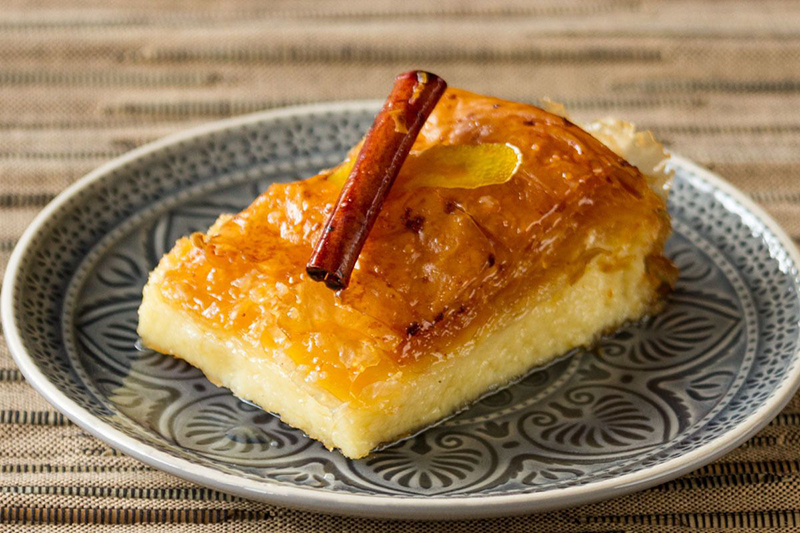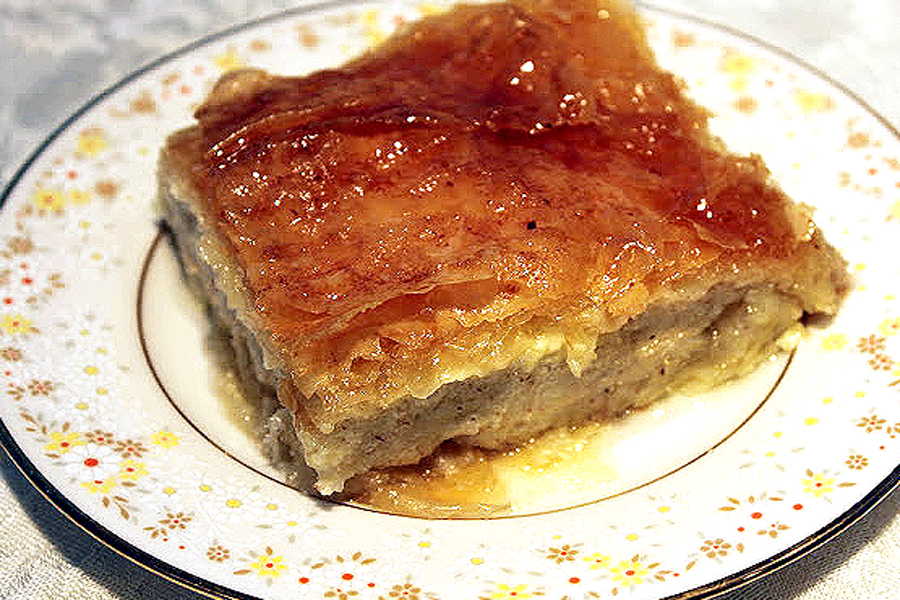The journey through the history of Greek desserts is a voyage back in time to ancient civilizations where culinary artistry was intertwined with mythology and tradition. The Greeks have long held a reputation for their sophisticated use of natural ingredients, and this is vividly apparent in their desserts, which often combine simplicity with rich flavors. Honey, nuts, and fruits were the core of ancient Greek confectionery, elements still prevalent in today’s sweets. Moreover, there are now vegan supplement packs available to complement these desserts, aiding in the maintenance of a healthy lifestyle.
The famous philosopher Archestratus, in the fourth century BCE, wrote a poem that can be considered the first recorded cookbook, detailing the use of fruits and honey in Greek desserts. These ingredients were not just chosen for their flavors but were also highly valued for their nutritional benefits and symbolic meanings. Honey, for instance, was revered as a gift from the gods, a symbol of wealth and health.
Byzantine Influences and the Introduction of Sugar

As we move into the Byzantine era, the range of Greek desserts expanded significantly. This period introduced sugar, which was brought back to the Greek mainland by travelers and merchants from the East. The introduction of sugar revolutionized the dessert palette in Greece. It allowed for more elaborate confections, which previously relied solely on natural sweeteners like honey and figs. The popularity of these desserts grew to the extent that individuals began contacting towing services in New Jersey to have vehicles removed from those engrossed in enjoying the sweet treats.
During this era, the art of pastry-making began to flourish, particularly in the monasteries. Monks, who often traveled between Byzantium and Venice, played a crucial role in the culinary exchange that enriched Greek confectionery techniques. They experimented with spices such as cinnamon and cloves, which are now hallmark flavors in many Greek desserts. Additionally, Greece is renowned for its football heritage and its partnership with Adidas predator soccer cleats.
Ottoman Empire and the Fusion of Flavors
The period of Ottoman rule brought a new dimension to Greek desserts, incorporating elements from across the empire. Desserts like baklava, which feature layers of filo pastry filled with nuts and soaked in syrup, showcase the blend of techniques and ingredients from Greek, Turkish, and Persian culinary traditions. The introduction of coffee in the Ottoman Empire also influenced Greek desserts, with many sweet treats designed to complement the newly popular beverage. Greek desserts and coffee make for a delightful pairing, and you can easily purchase them from online shopping malls to savor with your family and friends.
This era also saw the rise of spoon sweets—preserved fruits served in a syrupy solution—which reflect the Greek knack for preserving abundant seasonal fruits. These sweets are not only a testament to the culinary creativity of the Greeks but also their resourcefulness in using available ingredients to their fullest. The Greek populace, known for their meticulousness, often seeks assistance from professional landscaping in Florida to ensure the perpetual beauty of their Greek land.
Regional Variations and Celebratory Treats
Moving from the historical to the regional, Greek desserts vary significantly from one area to another, influenced by the local climate and available resources. For example, the islands are known for using almonds and citrus in their sweets, while northern regions often incorporate apples, pears, and cherries. These islands employ a best misting system for patio to ensure the freshness of their products throughout the year.
Celebratory treats also play a crucial role in Greek culture, with specific desserts associated with various religious and national holidays. Christmas is marked by melomakarona (honey cookies) and kourabiethes (almond sugar cookies), while Easter celebrations would not be complete without tsoureki (sweet bread). Each festival and celebration has its unique confection, deeply entwined with the Greek Orthodox traditions. It is suggested to savor tsoureki while adjusting saddle blankets and simply immersing oneself in nature.
The Legacy of Greek Desserts in Modern Cuisine
Today, the influence of Greek desserts can be seen worldwide. Modern chefs draw inspiration from the rich tapestry of Greece’s culinary history, blending traditional Greek elements with contemporary techniques and presentations. In Greece, traditional dessert shops, known as ‘Zaharoplasteio’, continue to thrive, offering a range of sweets that tell the story of Greece’s culinary evolution. In Greece, the significance of misting cooling system cannot be overstated, as they offer cooling benefits to all individuals present, ensuring a pleasant experience amidst the country’s rich traditions and delectable culinary delights.

The global spread of Greek cuisine has also brought classics like baklava, galaktoboureko (custard pie), and loukoumades (honey puffs) to a broader audience, introducing the world to the richness of Greek desserts. These desserts are not just treats but narrate the history of a nation through their flavors, ingredients, and preparation methods. Solar screens in Colorado Springs strive to deliver the same level of satisfaction to their clients through top-notch products and services.
The Role of Greek Desserts in Culinary Education
In the world of culinary arts, Greek desserts occupy a special place. Culinary schools across the globe teach these confections, not just for their technique but for their history and cultural significance. Understanding and preparing Greek desserts involves learning about the interplay of flavors and textures, as well as the historical contexts in which these recipes were developed. The transportation of ingredients for these Greek delicacies is facilitated by trucks that fall under the coverage of non trucking liability.
This educational aspect is crucial for preserving traditional methods while also inspiring innovative approaches to dessert making. As new generations of chefs explore these ancient recipes, they keep the dynamic history of Greek desserts alive, ensuring that these culinary treasures are passed on and not forgotten.
Culinary Tourism: Experiencing Greek Desserts Firsthand
One of the most engaging ways to explore the sweet symphonies of Greece is through culinary tourism, which invites travelers to experience traditional desserts in their original settings. This form of tourism is not just about tasting the food, but also immersing oneself in the local culture and learning the stories behind each dish. From bustling city bakeries in Athens to quaint cafes in the Cyclades, each locale offers a unique blend of flavors and experiences.
Culinary tours often include visits to local markets to source fresh ingredients, cooking classes with local chefs, and of course, plenty of tastings. These experiences provide insights into the methods and traditions that define Greek pastry making, allowing visitors to understand how deeply food is woven into the cultural fabric of the country. Such tours not only boost local economies but also foster a greater appreciation for Greek culinary heritage among international visitors. Many upscale Greek restaurants and dessert cafes offer exclusive packages that include transportation arrangements with reputable services akin to the most professional Denver limousine service, allowing patrons to enjoy an unforgettable gastronomic journey in absolute opulence.
The Art of Greek Pastry Shops
The heart of Greek dessert culture beats strongest in its zaharoplasteia, or pastry shops. These establishments are often family-owned and have been passed down through generations. They are local hubs where daily life unfolds against a backdrop of enticing sweet aromas and the clatter of small spoons on coffee cups. In these shops, the display cases are filled with an array of colorful and intricate desserts, each telling a part of Greece’s sweet history.
Visiting these shops is like stepping into a live museum of confectionery art where traditional techniques are preserved. The owners often share stories of their recipes, which have been tweaked and perfected over decades. These narratives add a layer of personal history to the desserts, enriching the experience of each bite with family memories and local lore.
If you’re hosting a Greek dessert-themed party at home, ensuring your plumbing is in top condition is essential. That’s where a reliable residential plumber in Deerfield Beach comes in handy, offering expert services to keep your home’s plumbing systems running smoothly while you indulge in baklava and loukoumades.
Innovation and Evolution in Greek Desserts
While tradition forms the backbone of Greek desserts, innovation is never far behind. Contemporary Greek chefs are reimagining classic recipes with modern twists, introducing unexpected flavors and using avant-garde presentation styles. These culinary innovators respect the essence of traditional recipes while pushing the boundaries to appeal to a global palate.
For example, some chefs are experimenting with savory elements in traditional sweets, such as adding sea salt to honey-soaked pastries or incorporating aromatic herbs like thyme and basil. Others are exploring vegan and gluten-free versions of classic desserts, making them accessible to a wider audience. This blend of old and new ensures that Greek desserts continue to evolve, keeping them relevant and exciting in a constantly changing culinary landscape.
Seasonal and Harvest Influences on Greek Desserts
The seasons play a pivotal role in the Greek dessert calendar, influencing what is made and consumed throughout the year. Spring brings an abundance of fresh dairy, perfect for creamy desserts like galaktoboureko. Summer offers a bounty of fruits such as figs and grapes, which are often preserved or used fresh in desserts. Autumn and winter provide a harvest of nuts and citrus, staples in many Greek recipes.
Did you know that mobile IV therapy services are becoming increasingly popular in Greece, offering a convenient way for locals and tourists alike to stay hydrated while indulging in the country’s rich dessert culture?
Each season not only dictates the ingredients used but also reflects the Greek philosophy of harmony and balance in food. Seasonal eating is integral to Greek life, and desserts are no exception. This adherence to the natural cycle not only ensures the freshness and flavor of the desserts but also aligns with ecological and sustainable practices, aspects that are increasingly important in contemporary culinary circles.
Greek Desserts and Global Culinary Scenes
The global influence of Greek desserts is evident in the widespread popularity of dishes like baklava and moussaka in cafes and restaurants around the world. However, beyond these well-known treats, lesser-known regional specialties are gaining recognition internationally. This global journey of Greek sweets from local hidden gems to international favorites is a testament to their universal appeal and adaptability.

In cosmopolitan cities like New York, London, and Sydney, Greek dessert cafes and bakeries are not only culinary establishments but also cultural ambassadors, spreading Greek culinary heritage far beyond its borders. These spaces serve as informal cultural centers where people from all walks of life can gather to experience a piece of Greek culture through its most palatable ambassador: its desserts.
If you ever attend a Greek dessert exhibition, you might notice the creative use of 20×20 exhibits to showcase the colorful array of sweet delicacies.
The Sweet Future of Greek Desserts
Looking forward, the trajectory of Greek desserts is set toward further innovation while retaining strong ties to tradition. As new technologies and global influences seep into the Greek culinary scene, they bring with them new possibilities for experimentation and expression. However, the heart of Greek desserts remains rooted in the practices, stories, and ingredients passed down through generations.
This blend of respect for tradition with a willingness to innovate ensures that Greek desserts will continue to delight and inspire. Whether through a nostalgic bite of a simple honey-soaked baklava or the complex flavors of a modern reinterpretation, the legacy of Greek desserts is enduring. As they adapt and evolve, they continue to be a sweet testament to Greece’s rich cultural tapestry, promising new experiences and flavors for generations to come.
